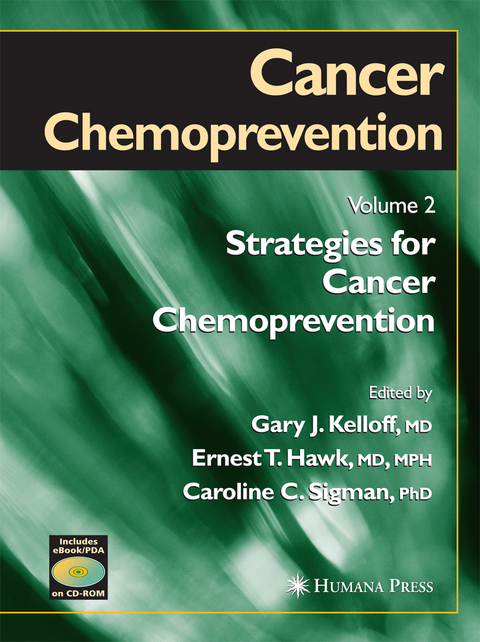
Cancer Chemoprevention
Humana Press Inc.
978-1-58829-077-9 (ISBN)
Chemopreventive Agent Development Science.- Characterization of Natural Product Chemopreventive Agents.- Preclinical Animal Models for the Development of Cancer Chemoprevention Drugs.- Potential Use of Transgenic Mice in Chemoprevention Studies.- Modeling Human Colorectal Cancer in Mice for Chemoprevention Studies.- Pathology of Incipient Neoplasia.- Quantitative Nuclear Grade.- Enabling Discovery Through Online Cancer Genome Databases and Analytic Tools.- Functional Genomics for Identifying Surrogate Endpoint Biomarkers in Breast Cancer Chemoprevention.- Clinical Applications of Proteomics.- Bioinformatics and Whole-Genome Technologies.- Models of Absolute Risk.- Genetic Polymorphisms and Risk Assessment for Cancer Chemoprevention.- Design Issues in Prostate Cancer Chemoprevention Trials.- Recruitment Strategies for Cancer Prevention Trials.- Cancer Chemoprevention at Major Cancer Target Sites.- Prostate Cancer Prevention.- Use of PSA to Evaluate Risk and Progression of Prostate Cancer.- Clinical Approaches to Discovering and Testing New Breast Cancer Prevention Drugs.- Ductal Lavage.- Counteracting Estrogen as Breast Cancer Prevention.- Chemoprevention of Colorectal Cancer.- Screening in Risk Evaluation and Prevention of Colorectal Cancer.- Strategies in Lung Cancer Chemoprevention.- Lung Cancer Chemoprevention.- Bladder Cancer.- Barrett’s Esophagus.- Endoscopic Detection of Esophageal Neoplasia.- Chemoprevention Strategies for Esophageal Squamous Cell Carcinoma.- Chemoprevention of Upper Aerodigestive Tract Cancer.- Chemoprevention of Oral Cancer.- Strategies in Skin Cancer Chemoprevention.- Opportunities and Challenges for Skin Cancer Chemoprevention.- Progress in Developing Effective Chemoprevention Agents for Cervical Neoplasia.- Immunoprevention of CervicalCancer.- Objective Biomarkers in Endometrioid-Type Endometrial Carcinogenesis.- Epithelial Ovarian Cancer.- Strategies for Chemoprevention in Pancreatic Cancer.- Clinical Strategies for Chemoprevention of Liver Cancer.- Chemoprevention.
| Erscheint lt. Verlag | 1.2.2005 |
|---|---|
| Reihe/Serie | Cancer Drug Discovery and Development |
| Zusatzinfo | XXI, 543 p. With CD-ROM. |
| Verlagsort | Totowa, NJ |
| Sprache | englisch |
| Maße | 210 x 279 mm |
| Themenwelt | Medizin / Pharmazie ► Medizinische Fachgebiete ► Onkologie |
| ISBN-10 | 1-58829-077-8 / 1588290778 |
| ISBN-13 | 978-1-58829-077-9 / 9781588290779 |
| Zustand | Neuware |
| Haben Sie eine Frage zum Produkt? |
aus dem Bereich
